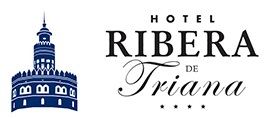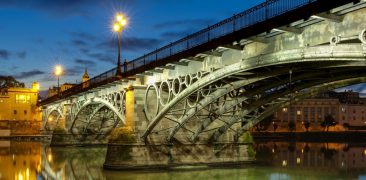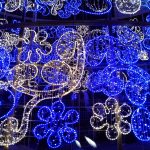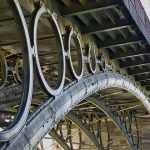It’s fair to say that Triana is one of the best known neighbourhoods in Spain, both within Seville and outside the Andalusian capital. It is one of the most popular neighbourhoods in the city and it has a rich history too. People in Seville often joke half seriously, ‘What came first: Seville or Triana?’
Bathed by the Guadalquivir River, guarded by the Torre del Oro and accessible via the Triana Bridge and Altozano Plaza, Triana waits for you. However, fame alone is not what makes Triana noteworthy. It is visited by both locals and visitors alike, and is a must see for anyone visiting Seville for a few days.
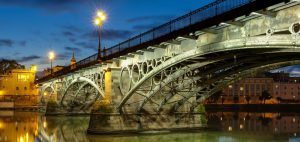
Triana is a modest neighbourhood, but it is also charismatic; working class, but full of riches; Triana is simple but very folkloric. Birthplace of numerous flamenco singers and dancers as well as bull fighters and sailors, those who visit her, always return.
Searching for hotels in Triana, Seville, you’ll find magical nooks in the centre of the neighbourhood that will allow you to enjoy a tour through its streets. Take note of all the things that Triana has to offer:
– Triana Bridge: its real name is Isabel II Bridge and it is the oldest preserved iron bridge in Spain. Since its construction in 1852, it connects the neighbourhood with Seville’s city centre. An evening stroll will offer magical views of the city!
-Capillita del Carmen: on your way across the bridge, heading towards Triana you’ll find, on the right hand side, a small cute chapel in honour of the patron saint of sailors; the Virgen del Carmen. This structure was designed by the architect Aníbal Ganzález, also author of the famous Plaza de España. Take a peek through the railings and you’ll be able to see the painting of the Virgin.
– Triana Indoor Market: a compulsory visit for all those who want to meet the locals, to breathe in the essence of the neighbourhood and enjoy the perfect mix of tradition and innovation. Fish mongers, butchers and fruit and vegetable stalls stand proudly next to others selling sushi, oysters or craft beer. The market was built over 200 years ago over the ruins of the Saint George Castle, key location and once See to the Spanish Inquisition.
– Inquisition Alley: this narrow alley is 35 metres long and is a sinister reminder of darker times. It was the route heretics took when awaiting sentence and was also followed by those who had already been condemned by the Inquisition to be burnt at the stake.
– Alfarería Street: perhaps the name gives us a clue as to what we’ll find in this street in Triana. Many centuries ago, Triana was a hub for pottery factories and workshops, due to its proximity to the river (they took the materials from here and then shipped the finished products along the river) and the fact it was on the outskirts of the city, where the fumes and smoke from the chimeneys didn’t bother anyone. Today you can still find small workshops which produce handmade items.
– Betis Street: right on the river, the famous Betis Street has become a meeting point for young people who want to enjoy an evening out in Seville. Full of entertainment and dining establishments, it’s the perfect place to enjoy Seville’s gastronomy.
– Santa Ana Church: commissioned by Alfonso X, this Gothic-Moorish style church is found in Pureza Street and is the See of the Archicofradía Sacramental de la Esperanza de Triana.

